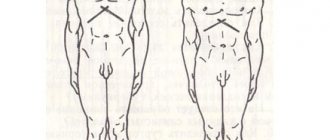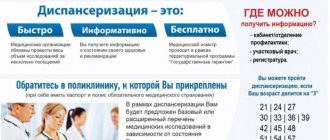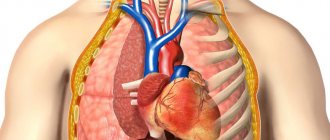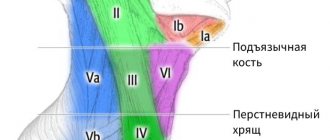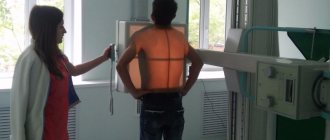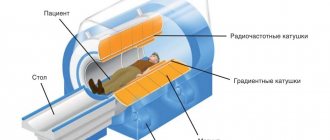What is mastocytosis?
Mastocytosis is a rare disease characterized by an abnormal accumulation of mast cells in the skin, bone marrow, and internal organs (liver, spleen, gastrointestinal tract, and lymph nodes). Cases beginning in adulthood tend to be chronic and involve the bone marrow in addition to the skin, whereas in childhood the condition is often marked by cutaneous manifestations without involving the internal organs and can often resolve during puberty. In most adult patients, mastocytosis tends to be persistent and may progress to a more advanced stage in a minority of patients. Mastocytosis can be classified into a specific type depending on the symptoms and overall appearance.
Standard tables
The concentration of formed cells is determined as a percentage of the total volume of cytological structures. Based on this, the indicators are presented in the table:
Among women
| Age (years) | Ratio (proportion%) |
| 10-20 | 3-8 |
| 20-30 | 3-9 |
| 30-40 | 3-10 |
| 40-50 | 3-11 |
| 50-60 | 3-12 |
| 60-70 | 3-13 |
| After 70 years | 3-13 |
Throughout life, as can be judged from the above values, the lower limit remains at the same level. The upper level is constantly increasing, which is caused by the gradual accumulation of negative factors from the outside, damage by viral and bacterial agents in general.
In men
Representatives of this part of humanity have approximately the same levels of monocytes, but slight deviations in a positive direction are possible. If we talk about specific numbers.
| Years | Monocytes % |
| 10-20 | 3-9 |
| 20-30 | 3-10 |
| 30-40 | 3-10 |
| 40-50 | 3-12 |
| 50-60 | 3-12 |
| 60-70 | 3-13 |
| Over 70 years old | 3-13 |
In children
Rates vary depending on age. In the very first days they are initially lower, which is caused by the gradual formation of immunity. But the defensive forces are still weak and unstable.
| Child's age | Norms in percentage terms |
| Newborns | 4-12 |
| Up to 1 year | 4-11 |
| 2-4 | 3-10 |
| 4-6 | 4-10 |
| 6-8 | 3-10 |
| 8-13 | 3-11 |
| 13-14 | 3-11 |
| Over 14, adolescence, puberty. | 2-12(13). Depending on the individual characteristics of the body. |
During pregnancy
During gestation, monocyte counts are initially lower than in women without a similar condition. This is the result of a wide distribution of formed cells, providing protection not only to the mother’s body, but also to the child’s body.
| Trimester | Monocyte level |
| I | 3-8 |
| II | 4-8 |
| III | 4-8 |
The average numbers are approximately the same. With multiple births, a significant decrease in this value is possible.
All indicators considered are indicative.
On average, if we talk about the calculation, the norm of monocytes in the bloodstream is represented by a range of 3-11%, plus or minus, which in absolute values is 0.08-0.6 x 109/.
Further, everything depends on the characteristics of the body, gender, age, and state of health.
In any case, deciphering should be done by hematology specialists. It is also possible to involve doctors who specialize in the functioning of the immune system.
Types of Mastocytosis
Mastocytosis may mainly affect the skin (called cutaneous mastocytosis) or other parts of the body (called systemic mastocytosis).
- Cutaneous mastocytosis: Cutaneous mastocytosis most often occurs in children. Sometimes mast cells accumulate in the skin only as a single mass (mastocytoma), usually before 6 months of age. Most often, mast cells accumulate in many areas of the skin, forming small reddish-brown spots or bumps (called urticaria pigmentosa). Urticaria pigmentosa rarely develops into systemic mastocytosis in children, but it may occur more often in adults.
- Systemic mastocytosis: Systemic mastocytosis most often occurs in adults. Typically, mast cells accumulate in the bone marrow (where blood cells are made). They often also accumulate in the skin, stomach, intestines, liver, spleen and lymph nodes. Organs can continue to function with almost no disruption. But if too many mast cells accumulate in the bone marrow, the production of blood cells is significantly reduced, and serious blood diseases such as leukemia can develop. If too many mast cells accumulate in organs, the organs begin to malfunction. The resulting problems can be life-threatening.
What is the norm of monocytes in the blood?
Normally, these cells should be no more than 3–11% of the total number of neutrophils. There are absolute and relative values of monocytes. An absolute increase in the number of monocytes (absolute monocytosis) is an increase in their number against the background of a general increase in leukocytes, an absolute decrease (absolute monopenia) is the same, only in a decreasing direction.
A relative increase in monocytes (relative monocytosis) is an increase in the number of cells relative to the normal content of leukocytes, that is, changes occur between neutrophil fractions; accordingly, such a decrease in monocytes will be called relative monopenia.
Signs and symptoms
A solitary mastocytoma may not cause symptoms.
The spots and bumps may be itchy, especially if you rub or scratch them. Itching may worsen if:
- temperature changes;
- contact with clothing or other materials;
- the use of certain medications, including non-steroidal anti-inflammatory drugs (NSAIDs);
- consuming hot drinks, spicy foods or alcohol;
- physical activity.
If the spots are rubbed or scratched, they may develop into hives and the skin may become red.
Hyperemia often occurs.
Peptic ulcers can develop because too much histamine is produced, stimulating the secretion of stomach acid in excess. Peptic ulcers can cause stomach pain. Nausea, vomiting and chronic diarrhea may also occur. The abdomen may become enlarged if the liver and spleen are not functioning properly, causing fluid to accumulate in the abdominal cavity.
If the bone marrow is affected, bone pain may occur.
People with mastocytosis may become irritable, depressed, or moody.
Extensive reactions may occur. With systemic mastocytosis, extensive reactions are usually severe. These include anaphylactic and anaphylactoid reactions, which cause fainting and a life-threatening drop in blood pressure (shock). Anaphylactoid reactions resemble anaphylaxis, but they are not caused by an allergen.
Causes and risk factors
Genetic changes (mutations) resulting in excessive activation of the mast cell growth factor receptor (KIT) have been identified in abnormal mast cells in almost all adults with mastocytosis and in approximately 80% of children with skin lesions. The most common c-kit mutation in mastocytosis is D816V and is thought to cause abnormal proliferation and accumulation of mast cells in tissues. Approximately >90% of adults and 40% of children are also affected by this mutation, while an additional 40% of children have mutations in other KIT regions. The prognostic significance of the type of mutation in childhood disease has not yet been determined. Mutations are somatic in nature and therefore are not transmitted to the next generation in most patients.
The release of mediators produced by mast cells, such as histamine, heparin, chemokines, cytokines, leukotrienes, and prostaglandin D2, among other cellular mediators, leads to symptomatic episodes. Histamine is a naturally occurring chemical released during an allergic reaction, causing itching, shortness of breath, dilation of blood vessels and hypersecretion of stomach acid.
Causes of degranulation
As already mentioned, mast cells are structures that mediate the development of inflammatory and allergic reactions. Degranulation processes can be triggered by various factors, including:
- penetration into tissues of allergens (substances to which the human immune system is sensitive);
- physical damage to tissues and cells;
- contact of mast cells with bacterial pathogens;
- penetration into the body of certain chemicals, including morphine.
Disorders with similar symptoms
Symptoms of the following disorders may be similar to those of mastocytosis. Comparison may be useful for differential diagnosis:
- Inflammatory bowel disease (IBD) is associated with an abnormal immune response to naturally occurring bacteria in the gastrointestinal tract. Patients may experience weight loss, abdominal cramps and pain, nausea and vomiting, fatigue, and irregular bowel movements. Diagnosis of inflammatory bowel disease is often based on symptoms, which may include a fast heartbeat (tachycardia) and a low number of red blood cells (anemia), which leads to fatigue, dehydration and fever. There are various tests and imaging studies that may be performed to confirm the diagnosis and may include: complete blood count, serologic studies, stool studies, nutritional assessment, colonoscopy, abdominal ultrasound, and other gastrointestinal imaging studies.
- Irritable bowel syndrome (IBS) is a gastrointestinal disorder associated with abdominal discomfort, altered intestinal structures, and, in some cases, inflammation of the gastrointestinal tract. Patients with IBS may experience heartburn, nausea and vomiting, clear or white mucus, abdominal pain, and constipation or diarrhea. Patients may also experience abdominal bloating, which can be confirmed by a CT scan of the abdomen. There are specific criteria for diagnosing IBS based on the frequency and duration of symptoms of the disorder. The diagnostic criteria for IBS require that patients have had recurrent abdominal pain or discomfort on at least three days per month during the past three months, associated with two or more of the following conditions: relief with bowel movements; onset associated with changes in stool frequency; and/or onset associated with a change in the shape or appearance of the stool. To make a diagnosis of IBS, a physical examination, laboratory tests, and x-rays may be performed to rule out any other causes.
- Intestinal malabsorption includes Patients may experience diarrhea and weight loss; However, more characteristic symptoms are often based on a specific cause. Various tests may be performed to identify the cause and may include blood tests, electrolyte and chemical panel tests, and serological testing. Treatment of malabsorption consists of correcting any nutritional deficiencies as well as treating the underlying condition.
- Myeloproliferative diseases are a group of disorders associated with the proliferation of one or more distinct cell lineages. Patients may experience fatigue, weight loss, abdominal discomfort, easy bruising or bleeding, infections, and other symptoms. Specific diagnosis may be based on laboratory tests (ie, complete blood counts, leukocyte alkaline phosphatase, polymerase chain reaction, serum uric acid levels, red blood cell mass) and bone marrow biopsies, which would reflect changes in blood cell counts. Treatment for myeloproliferative disease depends on the specific cause. Patients with chronic myelogenous leukemia can be treated with a number of chemotherapy agents. In comparison, treatment is focused on maintenance therapy for patients with polycythemia vera, essential thrombocythemia, and myelofibrosis.
- Urticarial rash (hives) is a skin condition associated with the appearance of red, raised patches on the skin that can be itchy and irritating when touched. Urticaria is often an isolated phenomenon not associated with other systemic symptoms or signs. Often urticaria is self-limiting and short-lived. Skin lesions may last from 20 minutes to three hours and then disappear within 24 to 48 hours. New-onset urticaria is often associated with an identifiable cause, such as direct contact, and can be identified from the patient's history. Urticaria can often be confused with other skin diseases. However, based on the characteristic appearance of hives (i.e., itchy red lesions on the skin), a diagnosis can be made. Treatment for hives often involves the use of antihistamines.
- Endocrine tumors such as carcinoid, pheocromocytoma, and medullary thyroid cancer can cause flushing. Hot flashes after menopause are usually short-lived and associated with sweating.
- Monoclonal mast cell activation syndrome. These patients have symptoms of mast cell activation, including recurrent anaphylaxis, but no evidence of cutaneous mastocytosis. Their bone marrow biopsy shows 1 or 2 minor criteria for systemic mastocytosis, but does not meet the full World Health Organization (WHO) criteria.
- Idiopathic mast cell activation syndrome. Patients with this disorder have episodic symptoms of systemic mast cell activation associated with elevated mast cell mediators such as tryptase and histamine or prostaglandin metabolites in the urine, respond favorably to treatment with mast cell mediator blocking drugs, and do not have diagnostic signs of cutaneous or systemic mastocytosis. Other disorders with similar symptoms, such as allergic diseases, must be excluded before this diagnosis is considered.
Degranulation mechanism
Mast cells are structures that play an important role in the development of inflammation and allergic reactions. The process of activation of these structures is called degranulation.
As already mentioned, on the surface of mast cells there are highly specific receptors for immunoglobulins E, which are produced by other cells of the immune system and play the role of antigens. The binding of these proteins and receptors is inevitable - very soon human mast cells find themselves literally covered with immunoglobulin molecules.
If a receptor on the mast cell membrane binds to two or more immunoglobulin E molecules (proteins linked by cross-coupling), this triggers degranulation processes. Human mast cells are activated, after which they release into the intercellular space a complex of certain mediators that are normally contained inside cell granules (hence the name “degranulation”).
Diagnostics
Diagnostics include:
- medical examination;
- biopsy;
- blood tests to rule out other diseases.
Doctors suspect mastocytosis based on symptoms, especially if there are patches that turn into hives and redness when scratched.
A biopsy can confirm the diagnosis of mastocytosis. Typically, a sample of skin tissue is taken and examined under a microscope for the presence of mast cells. Sometimes the sample is taken from the bone marrow.
If the diagnosis is unclear, doctors may do the following:
- Blood and urine tests to measure levels of substances associated with mast cells. High levels of these substances confirm the diagnosis of systemic mastocytosis.
- Blood and urine tests to rule out diseases that cause similar symptoms.
- Bone scan.
- Tests for a genetic mutation present in many people with mastocytosis.
- A biopsy (using an endoscope) to determine if there are abnormally high numbers of mast cells in the digestive tract.
Functions
Mast cells are involved in the development of allergic and anaphylactic reactions. The release of the contents of the granules upon binding of the Fc region of IgE antibodies that have bound the antigen to the FcεRI receptors on mast cells leads to the manifestation of all the main immediate hypersensitivity reactions. Degranulation does not lead to cell death, and granules are restored after release. Degranulation is also triggered by an increase in the intracellular concentration of cAMP and the cytosolic concentration of calcium ions. Due to the presence of pattern recognition receptors TLR2, TLR3 and TLR4, mast cells can directly recognize pathogens and their characteristic molecules[9]. In addition, due to special receptors on mast cells, they can be activated by some complement components[6].
Histamine, which is part of mast cell granules, causes expansion of postcapillary venules, activates the endothelium and increases vascular permeability[en]. The release of histamine leads to local edema (swelling), redness, increased temperature and the entry of other immune cells into the focus of mastocyte activation. Histamine also depolarizes nerve endings, which causes pain.[6]
Mast cells are found in the human brain, where they interact with the neuroimmune system[en][4]. In the brain, mast cells are found in structures that transmit visceral sensory signals (for example, pain) or carry out neuroendocrine[en] functions, as well as in the blood-brain barrier. They are present in the stalk[en] of the pituitary gland, pineal gland, thalamus, hypothalamus, area postrema[en]
in the brain stem, choroid plexus, and meninges. In the nervous system, mast cells perform the same basic functions as in the rest of the body: they are involved in allergic reactions, innate and adaptive immune responses, autoimmune reactions[en] and inflammation[4][17]. In addition, mast cells are the main effector cells[en] that are affected by pathogens through the gut-brain axis[en][18][19].
In the digestive tract, mucous mast cells are found close to sensory nerve endings[20][19][18]. When they undergo degranulation, they release transmitters that activate visceral afferent neurons and increase the expression of membrane nociceptors in them by binding to corresponding receptors on the surface of neurons[20]. As a result of this process, neurogenic inflammation, visceral hypersensitivity[en] and disturbances of intestinal motility[20] can develop. Activated neurons release neuropeptides such as substance P and CGRP[en], which bind to the corresponding receptors on mast cells and trigger their degranulation, leading to the release of substances such as β-hexosaminidase, cytokines, chemokines, prostaglandin D2, leukotrienes and eoxins[ en][20].
Standard Treatments
Treatment includes:
- medications to reduce symptoms;
- for aggressive systemic mastocytosis, other drugs such as interferon or surgery such as splenectomy.
A single mastocytoma may disappear spontaneously.
Itching caused by cutaneous mastocytosis can be treated with antihistamines. For children, no other treatment is required. If adults experience itching and rashes, psoralen (a drug that makes the skin more sensitive to ultraviolet radiation) may be applied to the skin, ultraviolet light, or corticosteroid creams may be used.
Systemic mastocytosis cannot be completely cured, but symptoms can be suppressed with H1 and H2 blockers. H1 blockers (commonly called antihistamines) may relieve itching. H2 blockers reduce the production of acid in the stomach and thus relieve the symptoms of peptic ulcers and help treat the ulcer. Taking cromolyn orally can relieve digestive problems and bone pain. Aspirin relieves flushing but may worsen other symptoms. Children are not given aspirin due to the risk of Reye's syndrome.
Causes associated with diseases
Acute infectious and inflammatory processes
This includes a wide range of possible problems. From typical ARVI to more dangerous disorders. According to studies, increased monocytes are observed from the very first days of the lesion and persist throughout the entire illness and even beyond that (an increase occurs over a period of 4-6 weeks).
After this time everything returns to normal. But gradually. If there is no positive dynamics after the specified period, it makes sense to look for a chronic infection, its source. Because this is not acceptable.
Mononucleosis
It occurs extremely often, albeit in the form of a sluggish infection. It is provoked by a strain of herpes type 4 (Epstein-Barr Virus).
With mononucleosis, there is a gradual increase in the monocyte count, a sharp jump is much less common. As for the dynamics, it has been absent for at least a month. Then the level slowly goes down.
Indicators of cytological units can be used to study the effectiveness of treatment.
Tuberculosis
Occurs relatively often. It affects not only the lungs, but also the bones and urinary tract. It is considered an extremely serious disease and is difficult to treat even with modern drugs.
Against the background of tuberculosis, a paradoxical reaction of the body is noted: monocytes grow, significantly exceeding the formal norm, and white blood cells, on the contrary, decrease.
The disease does not always manifest itself in this way. Latent and sluggish forms are possible, in which there are no deviations from the analysis at all. As well as symptomatic manifestations.
If monocytes in the blood are elevated, this means that the body is actively fighting the bacteria. In the context of the situation, we can talk about a formal norm.
Worm infestations
Opisthorchises, tapeworms, and roundworms of various types and forms have particular pathogenic activity. They trigger a false immune response in the body, which becomes the direct cause of the high content of monocytes in the blood.
At the same time, the presence of eosinophilia is typical for the development of such a change, although not always. It is necessary to examine the patient in more detail.
Autoimmune disorders
Inflammatory processes of non-septic type. In this case, there is a violation of a false nature.
The body's defenses react inadequately to the stimulus. Overly aggressive. Pathologies of this profile include diagnoses such as rheumatoid arthritis, Crohn's disease, lupus erythematosus, Hashimoto's thyroiditis (damage to the thyroid gland). Also other violations.
Depending on the situation, the concentration of monocytes may increase significantly.
Oncological processes
Malignant tumors. Since changes affect the immune system, the body tries on its own to reduce the rate of cell growth and limit neoplasia. But unsuccessfully.
Gradually, the concentration of monocytes increases and reaches a maximum by the time the tumor begins to disintegrate, when the rate of cell division reaches its peak value and there is no longer enough nutrition for all cancerous structures.
Poisoning
Salts of heavy metals, vapors of other substances. The number of monocytes increases temporarily until the poisons are eliminated.
Taking certain medications
The possibility of overestimating the concentration is indicated by the manufacturer in the annotation. Before use, you need to consider the possible side effects of this type. Also consider them when decoding (interpreting).
If monocytes are elevated in adults or children, this almost always indicates a pathological origin of the phenomenon; it is necessary to examine the patient for infections, autoimmune disorders, and also exclude tumors. It makes sense to diagnose as early as possible. So as not to be late.
Forecast
The prognosis depends on the age of onset. Most patients with urticaria pigmentosa present with disease onset before age 2 years, which is associated with an excellent prognosis, often with resolution at puberty. The number of lesions decreases by approximately 10% per year. However, acute widespread degranulation may rarely cause life-threatening episodes of shock.
The onset of cutaneous mastocytosis after age 10 years predicts a worse prognosis because late-onset disease tends to be persistent, is more often associated with systemic disease, and carries a higher risk of malignant transformation.
Diagnosis of pituitary diseases
The diagnostic methods are based on the following:
- visual inspection,
- hormonal screening,
- blood chemistry,
- Analysis of urine,
- CT scan,
- Magnetic resonance imaging,
- study of the fundus.
An appointment for tests and treatment is given by an endocrinologist. The following specialists can be involved in the diagnosis:
- orthopedist,
- nephrologist,
- ophthalmologist,
- gynecologist,
- andrologist
If necessary, the patient is referred to a neurosurgeon.
MRI method
The most informative way to establish an accurate diagnosis of pituitary pathology is the MRI diagnostic method.
It is based on measuring all parameters of the pituitary gland:
- Determination of the shape frontally and sagittally.
- Determining the size of the sella turcica.
- Vertical dimension measurement.
A normal pituitary gland should not have severe asymmetry and its size should correspond to the norm.
An increase in the vertical size of the pituitary gland may be observed, which will indicate a tumor process in the gland.
